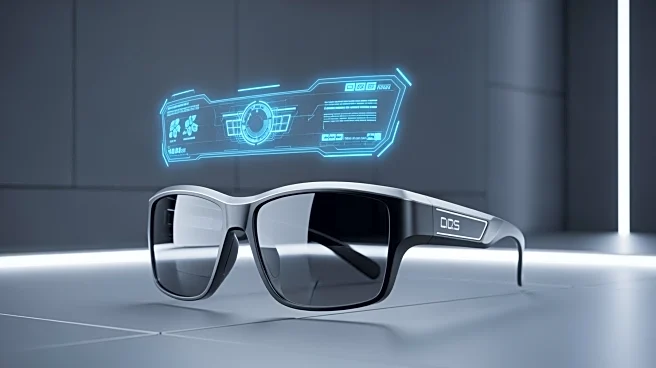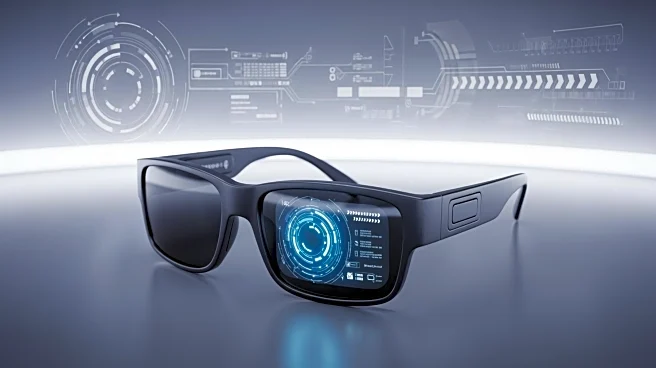What's Happening?
Meta has introduced its first smart glasses featuring a built-in display, marking a significant step in augmented reality (AR) technology. Announced on September 18, 2025, this product launch is expected
to influence AR/VR shipment trends, with analysts predicting a 39.2% increase in headset shipments for the year. The glasses are designed to enhance AR experiences, with retail and enterprise previews set to begin in the fall. This move is part of Meta's broader strategy to accelerate AR adoption, setting new standards for pricing and distribution that competitors will need to address. The introduction of these glasses is also expected to prompt updates in developer tools to support the new display-centric hardware.
Why It's Important?
The launch of Meta's smart glasses is poised to significantly impact the AR industry by potentially accelerating mainstream adoption. With a projected increase in AR/VR shipments, the market is likely to see intensified competition as companies strive to meet new consumer expectations. The glasses' introduction could lead to a shift in how AR is integrated into everyday life, influencing retail experiences and enterprise applications. For developers and retailers, the challenge will be to adapt quickly to the new technology, optimizing software and services for display-first experiences. This development could also drive innovation in AR storytelling and applications, as creators explore the possibilities enabled by the built-in display.
What's Next?
As Meta's smart glasses enter the market, stakeholders will be closely monitoring consumer reactions and adoption rates. Retailers and enterprises are expected to conduct pilots and trials to assess the glasses' impact on customer engagement and operational efficiency. Developers will likely focus on creating new applications and experiences that leverage the glasses' capabilities. The success of this product could influence future AR device designs and strategies, potentially setting a new benchmark for the industry. Additionally, the pricing strategy, with an estimated entry point of $499, will be crucial in determining the glasses' accessibility and appeal to a broad consumer base.











